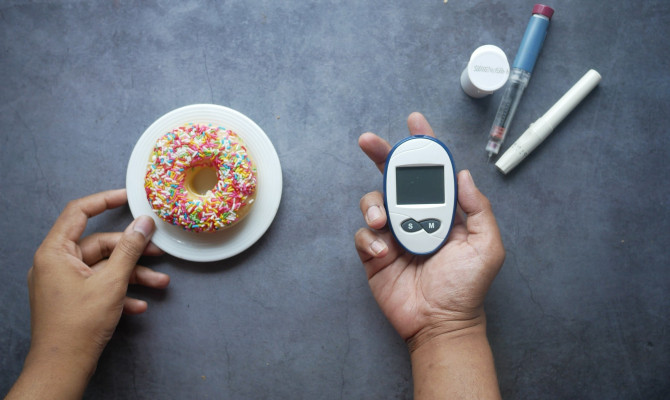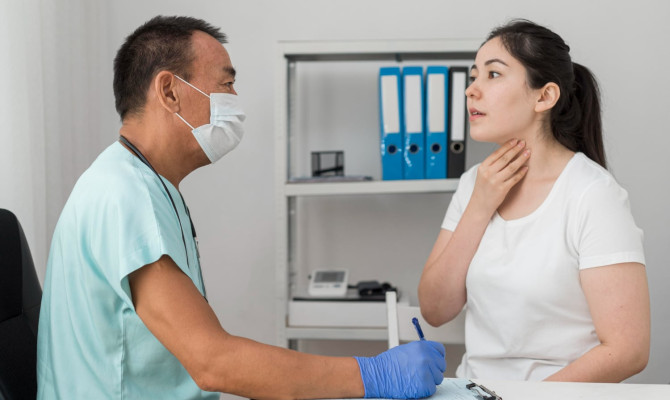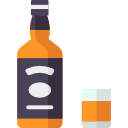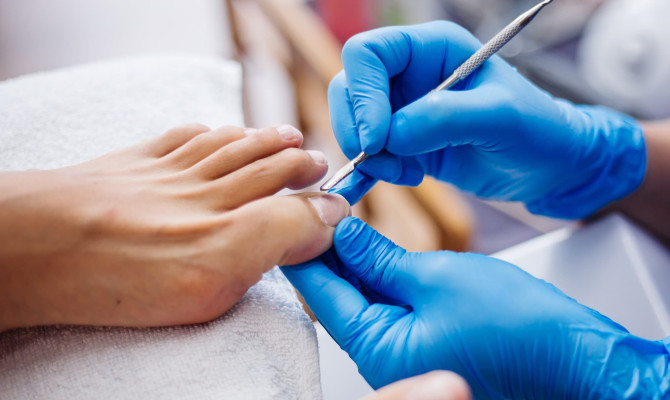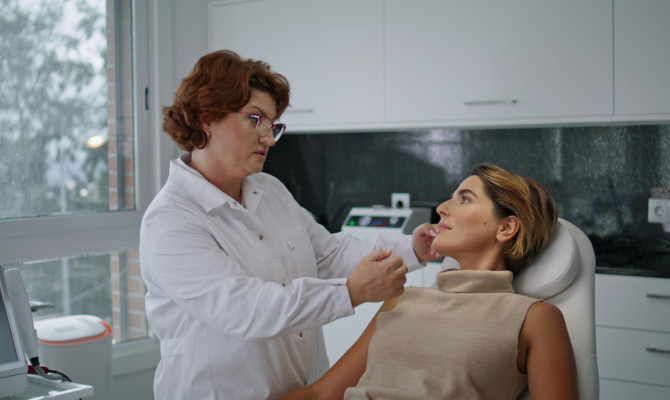Understanding Type 1 Diabetes: Causes, Symptoms, and Treatment Options

- Diabetes
- 14 Aug 2023
Overview
What is Type 1 diabetes?
Type 1 diabetes, also called Juvenile diabetes, is a chronic autoimmune disease in which the pancreas does not or only minimally make insulin. A hormone called insulin is required for the body to use glucose, the primary source of energy for all of the body’s cells.
Your body cannot process glucose when you have type 1 diabetes because of a shortage of insulin.
Consequently, type 1 diabetics must inject themselves with insulin or use an insulin pump to control their blood sugar and avoid complications. 1What is Type 1 diabetes | Researched based study from Cdc.gov

Causes
What are the root causes?
The precise cause is unclear, but it is thought to result from a genetic and environmental cocktail. Here are a few possible reasons:
Genetics
- The tendency of the illness to occur in families’ points to a genetic basis. The risk of getting type 1 diabetes may be increased by specific genes involved in the immune system and beta cell function.
Autoimmune disease
- The immune system erroneously attacks and kills the pancreas’s insulin-producing cells.
Environmental factors
- Rotaviruses and enterovirus exposure are two environmental factors that may raise the chance.
- Viral infections or other environmental factors may cause the autoimmune reaction, though the exact cause is unknown. 1What are the root causes| Researched based study from Cdc.gov
Other elements
- Additional variables like location and age may also influence type 1 diabetes. People who live in northern latitudes may be at a greater risk of developing the condition, and children and adolescents are more likely to have it than adults.
Vulnerability
Who are at risk ?
Age
- Children, teenagers, and young adults are more likely to experience it. Even though it can happen at any age, the highest onset period is around.
Geography
- In colder regions and northern nations like Finland and Sweden, type 1 diabetes is more prevalent.
Racial/ethnic group
- There is a higher chance for members of some ethnic groups, such as non-Hispanic whites.
Autoimmune conditions
- There may be a higher risk for those with other autoimmune diseases, such as thyroid or celiac disease.
- It is crucial to understand that having one or more risk factors merely raises a person’s risk rather than guaranteeing that they will acquire type 1 diabetes. 3Who are at risk | Researched based study from Cdc.gov
Symptoms
How can I tell if I have type 1 diabetes?
Within a matter of days or weeks, the signs may appear suddenly. These signs could include
- Excessive appetite and thirst
- Fatigue
- Frequent urination
- Unexpected weight reduction
- Blurred images
- Easily irritated and changing moods
- Dry skin and mouth
- Nausea and diarrhoea
- Breath with a fruity odour Rapid breathing
If left untreated, it can cause severe complications and long-term harm to organs and tissues. 1How can I tell if i have type 1 diabetes| Researched based study from Cdc.gov
Diagnosis
How type 1 diabetes is diagnosed?
A blood glucose test
- Determines the blood’s level of glucose.
- Random and fasting blood sugar levels are checked. If your arbitrary sugar level is higher than 200 mg/dl and your fasting sugar level is more significant than 126 mg/dl, you may have diabetes.
The A1C test
- Determines your three-month normal blood glucose levels.
Test for antibodies
- Antibodies are proteins that unintentionally target the tissues in your body. A sign of type 1 diabetes is the existence of specific antibodies, including GAD and islet cell antibodies. 5How type 1 diabetes is diagnosed | Researched based study from Cdc.gov
Management
Management of type 1 diabetes
Type 1 diabetes does not presently have a cure, but several treatments can be used to control the disease and avoid complications.
Insulin
- Insulin therapy, which includes administering insulin via injection to the body, is the critical component of treatment. Insulin assists in controlling blood sugar levels and averting problems.
- Insulin come in syringes, pens, and devices for varying insulin delivery rates during the day and night.
- Your doctor will decide how much insulin you need based on several variables, including your weight, age, blood sugar levels, physical activity, and diet.
- There are various insulin formulations, including rapid-acting, short-acting, intermediate-acting, and long-acting. Your doctor will collaborate with you to choose the most appropriate formulation and dose for your requirements.
Tracking blood sugar
It’s critical to check blood sugar levels regularly. There are various techniques for keeping an eye on blood sugar levels.
SMBG (self-monitoring blood glucose)
- This entails taking a glucose reading from a tiny blood sample drawn from the finger puncture using a glucose meter.
Flash glucose monitoring (FGM)
- This more recent technique for monitoring blood sugar levels uses a tiny sensor worn on the back of the upper arm to detect blood sugar levels. The sensor can be scanned with a reader or a smartphone app to acquire the data.
- FGM provides glucose data for the preceding 8–14 hours, depending on the device used.
Continuous tracking of blood glucose
- Under-the-skin sensors are used by CGM devices to track blood sugar levels and provide feedback constantly. The information is sent to a device or smartphone app that receives it and gives real-time glucose readings and fluctuation alerts.
- This can aid in making more informed treatment choices for you and your doctor. 2Management of type 1 diabetes | Researched based study from Cdc.gov
Diet
The most significant effect of carbohydrates counting is on blood sugar levels.
- A balanced dinner should contain a variety of carbohydrates, proteins, and healthy fats. Pick lean proteins, nuts, fruits, veggies, whole grains, and olive oil.
- Sugar levels can be regulated by eating meals and refreshments regularly throughout the day.
- Avoid heavily processed foods and added sugars.
- Avoid or consume alcohol in moderation because it can cause blood sugar levels to fluctuate.
Exercise
Blood sugar levels can be impacted by exercise, so taking precautions to control them before, during, and for a short period after the activity is critical.
- If blood sugar levels are too high before exercise, waiting until they drop before beginning might be essential.
- Consider consuming a snack to raise your blood sugar levels before exercising if it is too low.
- Blood sugar levels should be frequently checked while exercising, and insulin dosages or carbohydrate intake should be modified as necessary.2Exercise in management of type 1 diabetes| Researched based study from Cdc.gov
Differences
What separates type 1 from type 2 diabetes?
Diabetes type 1
- The body’s defence system unintentionally attacks and kills the cells in the pancreas that produce insulin.
- Diagnoses can be made at any age, whether they are made by children or adults.
- Only 5% of cases of diabetes worldwide.
- The requirement for continued insulin therapy
- Cannot be avoided or treated.
Diabetes type 2
- The body ceases making enough insulin or becomes insulin resistant.
- Typically, it develops over time gradually and is influenced by living choices.
- Represents 90–95 per cent of all diabetes cases.
- It may be controlled by nutrition, physical activity, medication, and insulin therapy.
- It can be avoided or treated.
Cure
Is type 1 diabetes curable in any way?
There is no known treatment accessible at the moment. As a consequence, people must use an insulin pump or administer insulin injections for the rest of their lives.
However, scientists are investigating several possible treatments for type 1 diabetes, such as
- Stem cell therapy: It looks at the possibility of regenerating insulin-producing cells in the pancreas. Research on this is still in its early phases.
- Islet cell transplantation: Insulin-producing cells from a donated pancreas are transplanted into the patient.
- Immunotherapy: This treatment uses drugs to suppress the immune system and stop it from targeting the pancreatic cells that make insulin. 6Cure | Researched based study from Nlm.nih.gov
Complications
What are the associated complications?
- A cardiovascular condition-Blood vessels can be harmed by high blood sugar levels, which raises the chance of heart disease and stroke.
- Kidney injury-Sugar levels that are too high can harm the kidneys and cause kidney illness or even kidney failure.
- Eye injury-Diabetic retinopathy can result in blindness or visual loss.
- Nerve injury-There is a chance of nerve damage, resulting in discomfort, tingling, and numbness in the hands and feet.
- Foot injury-Foot ulcers and infections can result in amputation due to nerve damage and weak circulation.
- Skin and mouth infections-Increase the chance of skin and mouth infections by decreasing the body’s capacity to fight infections.
- Diabetic Ketoacidosis-Without enough insulin, the body begins to break down fat because it cannot use glucose as an energy source. This results in the creation of ketones, which, when they accumulate in the blood, can cause ketoacidosis, a potentially fatal disease. 3What are the associated complications| Researched based study from Cdc.gov
In pregnancy
Pregnancy and type 1 diabetes
- Women must work closely with their physicians before conception to ensure their blood sugar levels are well-managed and controlled. This could entail modifying the dose, diet, or workout routine.
- Women must closely control their blood sugar levels while pregnant to prevent complications like Foetal distress, Preeclampsia, and Pre-term birth.
- Additionally, they may be more likely to acquire gestational diabetes.
- A team of endocrinologists, obstetricians, and perinatologists may also be required to provide them with specialized treatment.
Prognosis
How does the prognosis look?
Depending on how well diabetics handle their situation, the prognosis can change. People with diabetes can live long, healthy lives and prevent or postpone the onset of diabetes-related complications with appropriate management.
As discussed, poor management can result in some severe health issues.
Despite the difficulties associated with type 1 diabetes, glucose monitoring equipment and insulin therapy improvements have significantly improved the prognosis.
Suggestions
Suggestions to stay healthy with type 1 diabetes
Create a routine: consistency is essential to controlling your blood sugar levels. Make an effort to establish a daily schedule for your meals, exercise, medications, or other therapies.
- Monitor your blood sugar levels: To monitor your blood sugar levels frequently, use a glucometer or CGM.
- Stay active: Find an activity you enjoy and make an effort to make it a regular part of your routine to stay physically active.
- Diet: Eat a balanced meal and drink plenty of water.
- Medicines: Take prescription medicines/ insulin as directed.
- Support: To get help and more information about managing type 1 diabetes, connect with individuals or communities experiencing the same thing. 4Suggestions to stay healthy with type 1 diabetes | Researched based study from Cdc.gov
Any feedback on this article?
 This Articles content was accurate
This Articles content was accurate Very Informative Article
Very Informative Article I have a question or a comment
I have a question or a comment
 This article contains inaccurate content
This article contains inaccurate content This article was not helpful
This article was not helpful I have a question or a comment
I have a question or a comment
We appreciate your helpful feedback!
Checkout our social pages
References
-
Centers for Disease Control and Prevention
What Is Type 1 Diabetes? | Introduction | Causes | Symptoms
-
Centers for Disease Control and Prevention
Types of Insulin | Treatment
-
Centers for Disease Control and Prevention
Diabetes Risk Factors | Risk | Complications
-
Centers for Disease Control and Prevention
Living With Diabetes | Suggestions
-
Centers for Disease Control and Prevention
Diabetes Tests | Diagnosis
-
National Library of Medicine
Current and future therapies for type 1 diabetes | Cure














